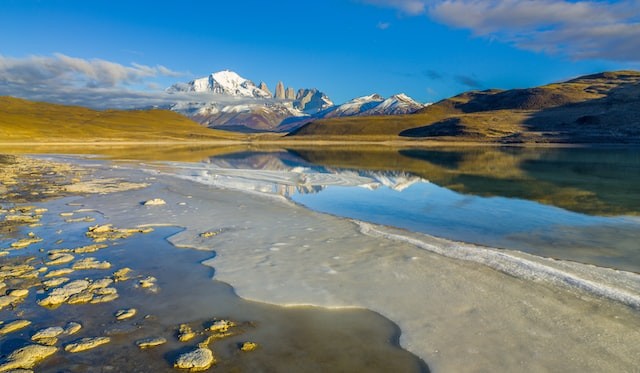Because non-biological processes can produce relatively similar structures, and because such fossils have frequently been subjected to advanced alteration and metamorphism, the earliest morphological traces of life on Earth are frequently highly contentious.
Stromatolites, layered organo-sedimentary structures that reflect complex interactions between microbial communities and their environment, have long been regarded as key macrofossils for detecting life in ancient sedimentary rocks; however, the biological origin of ancient stromatolites has been frequently questioned.
Earth's oldest stromatolites and the search for life on Mars
 (Photo : Chris Stenger/Unsplash)
(Photo : Chris Stenger/Unsplash)

Despite the fact that these stromatolites have been subjected to severe diagenesis and weathering and contain no organic materials, a team led by Dr. Keyron Hickman-Lewis of the Natural History Museum in London used optical and electron microscopy, elemental geochemistry, Raman spectroscopy, and laboratory- and synchrotron-based tomography to identify numerous characteristics suggestive of a biological origin, as per ScienceDaily.
In addition to performing laboratory tomography of 3D stromatolitic macrostructures, the team was able to achieve the first sub-micron pixel and voxel sizes for imaging of Precambrian stromatolite microstructures via phase contrast imaging at the Elettra Synchrotron, Trieste, Italy, using the SYRMEP beamline.
This enabled the identification of non-uniform layer morphologies, void spaces arising from the degassing of decaying organic
Due to recent weathering, the Dresser Formation stromatolites have been largely replaced by hematite (iron oxide).
While this makes organic geochemical analyses impossible, the composition is extremely important in the search for life on Mars.
Sedimentary rocks on Mars's surface have also been subjected to similar pervasive oxidation and contain mostly iron oxides in their upper centimeters to meters.
In this regard, the Dresser Formation stromatolites may be uniquely relevant materials to inform us of a specific style of biosignature preservation expected on Mars.
As the Mars 2020 Perseverance rover explores Jezero crater, we should look for morphological expressions of life similar to those found in the Dresser Formation and prepare for advanced multi-technique analyses when Martian samples are returned to Earth.
Also Read: NASA Rover catches Amazing Image of Cat Loaf Rock on Mars
The Earth's oldest living lifeforms
Stromatolites are living fossils and the world's oldest living lifeforms.
The name is derived from the Greek words stroma, which means "mattress," and lithos, which means "rock," as per BBC Travel.
Stromatolite literally translates to "layered rock." These ancient rocks date back three-quarters of the way to the beginnings of the Solar System.
According to a citizen scientist, stromatolites are stony structures built by colonies of microscopic photosynthesizing organisms known as cyanobacteria.
As the sediment layered in shallow water, bacteria grew on top of it, binding the sedimentary particles and building millimeter layer upon millimeter layer until the layers formed mounds.
With their empire-building came to their most important role in Earth's history.
Using the sun as a source of energy, they produced and increased the oxygen content of the Earth's atmosphere to about 20%, kissing all that was to come to life.
Only a few salty lagoons or bays on Earth have living stromatolites.
Western Australia is internationally significant for the diversity of living and fossilized stromatolite sites.
Fossils of the earliest known stromatolites, dating back about 3.5 billion years, have been discovered about 1,000 kilometers north, near Marble Bar in the Pilbara region.
With Earth estimated to be 4.5 billion years old, it's mind-boggling to realize we can see how the world looked when the continents were forming.
Related article: Blue Color Found on Mars, Dominates the Other Side of the Red Planet
© 2024 NatureWorldNews.com All rights reserved. Do not reproduce without permission.





